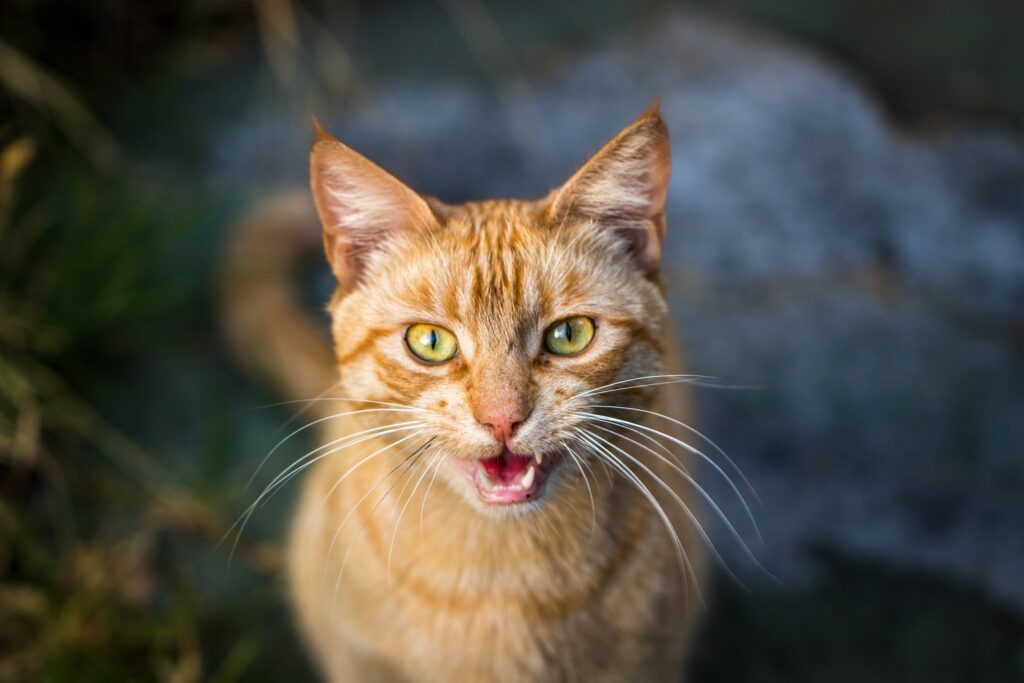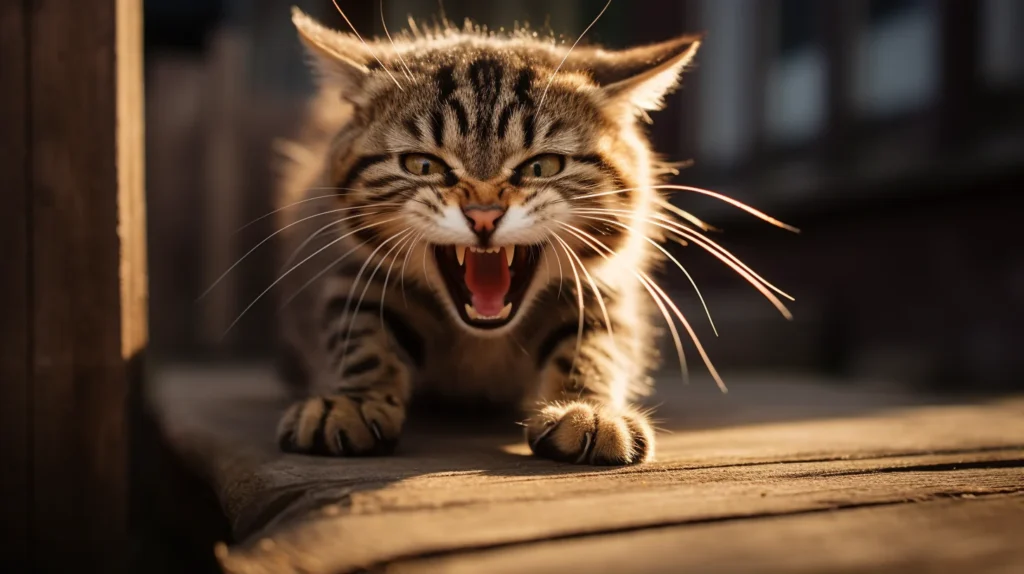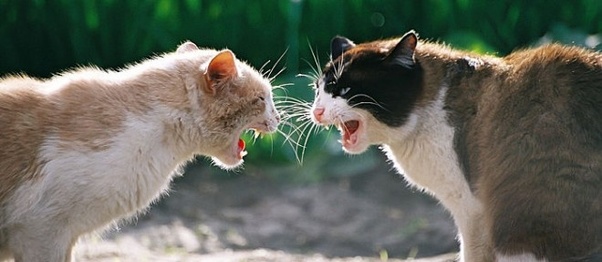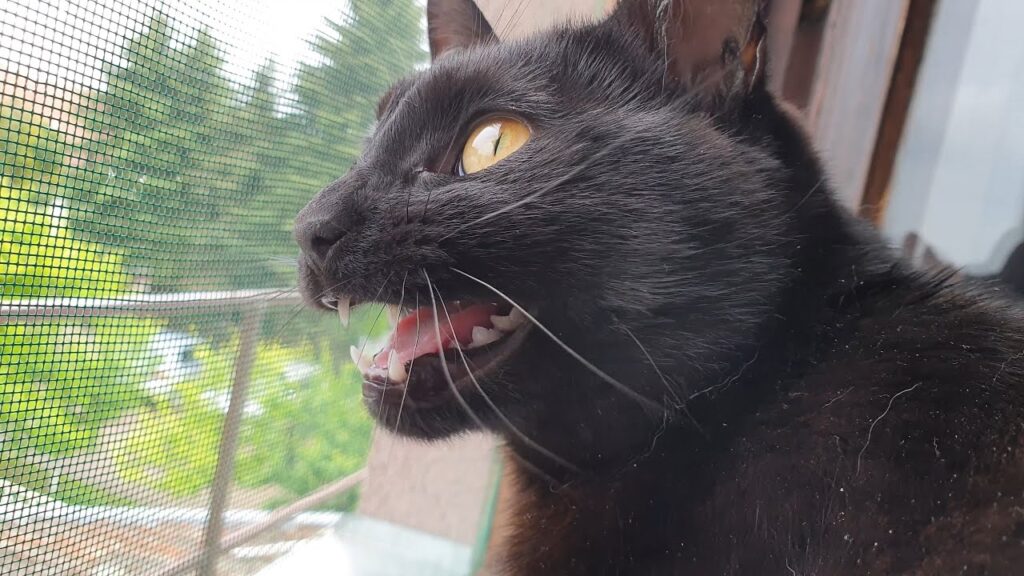Has your cat ever talked to you? Cats have a wide range of vocalizations to communicate with and can vary their pitch, length, and volume depending on what they are trying to convey. Cats’ auditory communications can be divided into categories: social conflicts between cats, during sexual behaviors, between mothers and youngsters, and interacting with humans.

Meowing
Meowing is actually a sound kittens make to get the attention of their mothers. However, adult domestic animals tend to retain some juvenile characteristics. Domestic cats have kept the meow as a way of communicating with humans. With a meow they may be asking for something they need such as food, attention, or access to an area. It is sort of an all purpose vocalizations which could indicate anything from a greeting, to a command, to an objection. We have become their surrogate mothers in this regard. Adult feral cats do not meow because they don’t have us acting in that role for them.
Purring
Purring is normally associated with contented and relaxed cats, and while they do purr in pleasant situations, they often also purr while sick, injured or stressed. It is now thought that purring is used as a way to convey contentment or appeasement, to self soothe, or to seek companionship. Looking at the context can give you a good idea of why your cat is purring in different situations.
Chirrups and Trills
These sound like the combination of meow and a purr. This is what mother cats use to greet their kittens upon return, or to get their kittens to follow them. Domestic cats often use this to say hello to their people. Of course, they may also be aching you to follow them to the food bowl!
Hissing and Spitting

Hissing is a pretty unmistakable sign of agitation and spitting is a more extreme or emphatic version of a hiss. It is important to note that this is an involuntary defensive response. A cat’s mouth is open and teeth are showing during a hiss. It is a signal to warn away would-be dangers. Different cats will hiss in different situations, depending on how agitated they are. Well-socialized cats tend to hiss less than a cat who has less experience with the world.
Growling and snarling
This is a long duration, low frequency vocalization. Growling sounds more like a rumble, where snarling is a growl punctuated with a higher pitched sound. These occur during aggressive interactions. Sometimes a growl might also occur as a warning to another animal or person whom the cat thinks might take away a resource, such as food.

Yowling
This resembles a long drawn out meow or howl and can occur in two very different circumstances. One is a female’s signal of willingness to mate to males in the area. The other is to communicate intense discomfort, distress, or displeasure. Sometimes in elderly cats this can indicate disorientation or confusion.
Chattering

Chattering is made when a cat rapidly and repeatedly brings her teeth together. It often happens when a cat sees a prey animal, thus eliciting her predatory instinct, but she cannot reach the prey. This is often seen in cats watching birds or squirrels through a window.
All cats are different in the amount they tend to vocalize. Some breeds are more vocal than others. Cats sometimes become more vocal as they age. This is thought to be due to either dementia or declining eyesight. Hearing loss can also cause a cat to vocalize more frequently.
